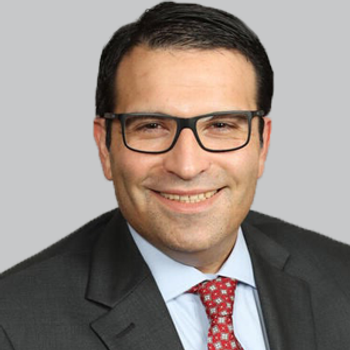
Concussion Update: 5 Important Facts
Causes of concussion include direct trauma, rapid acceleration-deceleration, and blast injury. Dr. Wilner discusses recent literature.
NEUROLOGY UPDATE
TRANSCRIPT
Interest in concussion as a major health concern has increased dramatically in recent years. For example, a PubMed search of “concussion” revealed 77 published papers in 1995. That number increased more than 10 times to 887 in 2017.
In a recent evidence-based practice guideline, the American Academy of Neurology defined concussion as a “clinical syndrome of biomechanically induced alteration of brain function, typically affecting memory and orientation, which may involve loss of consciousness (LOC) (Giza et al. 2013).”
Causes of concussion include direct trauma, rapid acceleration-deceleration, and blast injury. The military has a particular interest in the latter, and symptoms of blast injury are reviewed in a recent paper by Dr. Tsao and colleagues at the University of Tennessee (Tsao et al. 2017).
Motor vehicle accidents and falls are the most common causes of concussion (Mullually 2017). Sports-related concussions, an area that has received a great deal of recent attention, occur in 1.6-3.8 million Americans per year (Giza et al. 2013). This is probably an underestimate, as many athletes deliberately conceal their symptoms. A history of concussion is a high-risk factor for recurrent concussion.
The diagnosis of concussion is a clinical one, based on a compatible history, symptoms, and physical findings. In order to facilitate diagnosis by nonphysicians, the American Academy of Neurology has developed a free cellphone application.
Common concussion symptoms listed in the app include: behavior or personality changes, blank stare, dazed look, changes to balance, coordination, reaction time, delayed or slowed spoken or physical responses, disorientation (confused about time, date, location, game), loss of consciousness/blackout, memory loss of event before, during, or after injury, slurred /unclear speech, trouble controlling emotions, and vomiting.
Diagnostic tools are available intended to complement the clinical assessment:
Post-Concussion Symptom Scale (PCSS)
Graded Symptom Checklist (GSC)
Standardized Assessment of Concussion (SAC)
Neuropsychological testing (paper and pencil or computer)
Balance Error Scoring System (BESS)
Sensory Organization Test (SOT)
CT imaging can rule out more serious traumatic brain injury such as epidural, subdural or intracerebral hematomas, but cannot make the diagnosis of concussion.
Indications for CT scanning include:
Alcohol or drug intoxication
Loss of consciousness >1 minute
Age >60
Prolonged anterograde amnesia
Seizure
Persistent vomiting
Skull fracture
Coagulopathy
Abnormal neurological exam
Low Glasgow Coma Scale of <12 measured 2 hours post injury
Blood biomarkers may indicate brain injury, but are not yet in clinical use.
The pathophysiology of concussion includes release of excitatory neurotransmitters and potassium into the intracellular space, calcium influx into the cell, increased lactate, decreased regional blood flow, diminished glucose utilization, and axonal injury.
Loss of consciousness, due to a transient disruption of the reticular activation system, occurs in less than 10% of cases.
Average recovery time is 7-10 days, but an altered metabolic state may last weeks. During this time, the brain is more vulnerable to a second injury.
Acute Management
In sports, a player should not return to the game the same day after a concussion and should not return until symptoms are gone and the player is cleared by a health care expert.
Early physical activity is recommended with exercise as tolerated starting 1-2 days after injury.
Moderate cognitive activity is OK for the first 5 days, then increased. Recommendations for “complete brain rest” are unsupported by data.
Postconcussive symptoms may be somatic, cognitive, and behavioral and include:
Somatic
Headache, vertigo/dizziness, nausea, photophobia, phonophobia, tinnitus, difficulty focusing, postural lightheadedness, anosmia, and fatigue
Cognitive
Mental “fogginess”, memory difficulty, difficulty concentrating, word finding difficulty
Behavioral
Mood lability, irritability, hypersomnia, insomnia, anxiety, depression, personality changes
Postconcussive syndrome may last several years, but usually resolves in a week or 2.
Treatment is symptomatic
Nonsteroidal anti-inflammatories are first line medications.
Triptans may be considered for headaches with migrainous features.
Metoclopramide and prochlorperazine may be added for headaches with nausea.
Narcotics and butalbital should be avoided.
Observe for possible rebound and medication overuse headache.
Recovery may be influenced by a history of prior concussion, migraine, psychosocial problems, psychiatric disorders, litigation, compensation and malingering.
Repetitive mild head injury may result in a neurodegenerative disorder known as chronic traumatic encephalopathy or CTE. In 2005, Dr. Omalu and colleagues described neuropathological changes in a 50 year old professional football player consistent with CTE. These abnormalities are distinct from those of Alzheimer’s disease. Symptoms of CTE include cognitive decline, behavioral changes, emotional dysregulation, and motor disturbances. The prominent autopsy finding is clumps of tau protein. Dr. Omalu’s paper was controversial enough to inspire a major motion picture in 2015. Susceptibility to CTE may be related to apolipoprotein E (ApoE) genotype. The exact relationship of CTE to sports-related and other concussions is under active investigation.
Five important Facts
1. Concussion is a common event, affecting millions of Americans a year.
2. A history of concussion is a high-risk factor for recurrent concussion.
3. Any athlete with a concussion must be removed from play and cannot return until symptom free and cleared by a health professional.
4. Chronic traumatic encephalopathy is a neurodegenerative disorder associated with multiple concussions.
5. No particular intervention has been shown to enhance recovery or diminish long-term sequelae from concussion.
Thank you for listening. This is Dr. Wilner, reporting for Neurology Times. For more updates, follow me on Twitter @drwilner.
References
Giza CC, Kutcher JS, Ashwal S et al. Summary of evidence-based guideline update: Evaluation and management of concussion in sports. Neurology 2013;80:2250-2257.
Mullally WJ. Concussion. The American Journal of Medicine 2017;130:885-892.
Omalu BI, DeKosky ST, Minster RL et al. Chronic traumatic encephalopathy in a National Football League Player. Neurosurgery 2005;57:128-134.
Tsao JW, Stentz LA, Rouhanian M et al. Effect of concussion and blast exposure on symptoms after military deployment. Neurology 2017;89:1-7.
Newsletter
Keep your finger on the pulse of neurology—subscribe to NeurologyLive for expert interviews, new data, and breakthrough treatment updates.


































